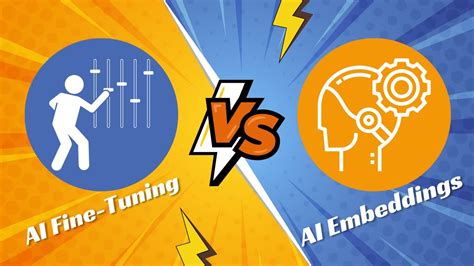The journey of artificial intelligence has entered a fascinating phase where finetuning is making significant strides. Finetuned models, especially smaller and more specialized ones, are beginning to outperform their more cumbersome, general counterparts like OpenAI’s GPT-4 in specific tasks. This transformative shift is opening up new horizons, demonstrating the sophisticated possibilities within the realm of machine learning.
One of the key points of discussion is the advantage of utilizing finetuned models for tasks that require a high degree of precision. While large language models such as GPT-4 are designed to be generalists, capable of performing a wide range of tasks, they often falter when subjected to specific, nuanced operations. In contrast, finetuned models that have been meticulously trained on domain-specific data sets exhibit superior performance. For example, models finetuned for text classification, data extraction, or specific information retrieval tasks have shown to deliver better accuracy and efficiency.
The preference for smaller, specialized models does not come as a surprise. As illustrated by several industry practitioners, including those from OpenPipe and Predibase, finetuned models like llama3-7b and mistral-7b have been successful in outperforming GPT-3.5-turbo, especially in strategies involving minimal computational overhead and high specialization. The fundamental principle behind these outcomes lies in the optimization and specialization of models for targeted applications, which results in enhanced performance metrics and reduced redundancy.
For instance, OpenPipe and similar platforms provide tools to streamline the finetuning process. These platforms allow users to input their own datasets, choose from a range of base models, and carry out the finetuning process efficiently. It’s a process that involves not just training the models on specific data but also evaluating their performance through tailored metrics. This modularity is essential for businesses that need highly specialized models for niche applications without the overhead costs and complexity of running larger models like GPT-4.
The conversation around finetuning frequently touches on the democratization of AI capabilities. It’s suggested that anyone with appropriate data and a clear understanding of their requirements could, theoretically, produce a model that excels in their domain. This is facilitated by the availability of open-source models and the decreasing cost of computational resources required for training and deploying these models. The example of BloombergGPT, which despite its scale did not outperform smaller specialized models like BERT in certain financial sentiment analysis tasks, underscores this point vividly.
Critics of finetunned models often mention the potential issues related to data leakage and overfitting. However, meticulous data handling and robust evaluation frameworks can mitigate these risks significantly. In essence, by leveraging finetuning, organizations can achieve high accuracy and reliability in their models, provided they rigorously validate and test their approaches. The ongoing improvements in model evaluation techniques, as mentioned by organizations like OpenPipe, further consolidate the robustness of these finetuned models.
Moreover, the efficiency of finetuned models brings about significant operational benefits. It allows for faster processing times and reduced costs, enabling businesses to deploy AI solutions that are not only effective but also scalable. Traditional models, often bogged down by their size and generalization, can sometimes become impractical for resource-constrained environments. In contrast, a well-tuned smaller model can deliver the required performance without demanding extensive computational power or storage space.
Looking ahead, the AI community seems geared towards further refinement of finetuning techniques. The continual advancements in transfer learning, structured output generation, and domain-specific training are likely to pave the way for even more specialized applications. For developers and data scientists, the future may very well lie in creating a suite of specialized models, each expertly trained to excel in a specific task, efficiently orchestrated by overarching systems that can route queries to the most apt model.
In conclusion, the evolution of finetuning is not just reshaping the AI landscape but also making it more accessible and practical. As more businesses and researchers leverage these advancements, we can expect a proliferation of high-performance, specialized models that outshine their larger, more generalized predecessors in targeted applications. This trend reaffirms the importance of precision in AI development and the value of expertise in model training and deployment.


Leave a Reply